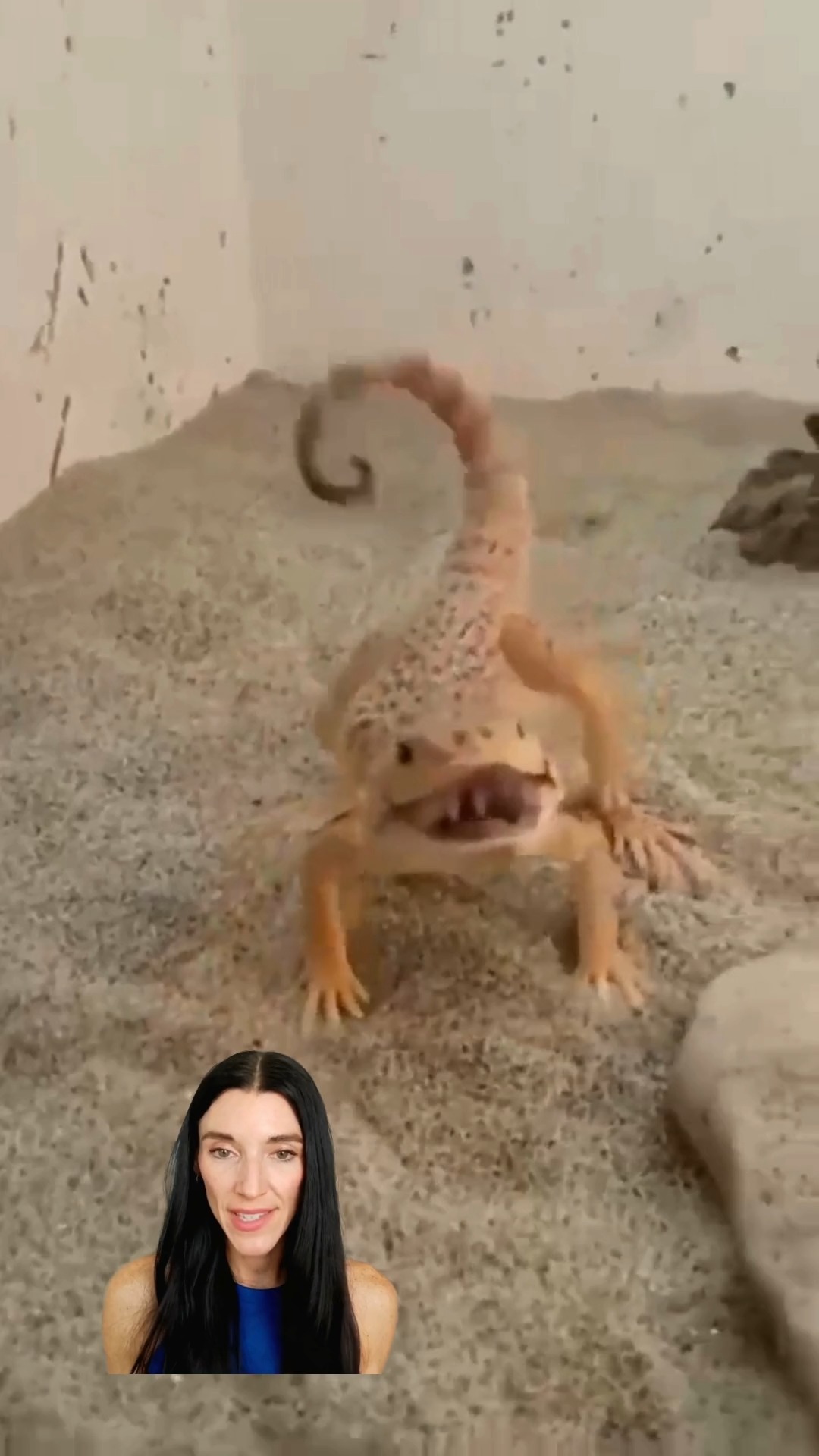- The remarkable defense mechanisms of the Toad-headed Agama.
- Habitat and geographical distribution of Phrynocephalus mystaceus.
- Behavioral adaptations that allow the Toad-headed Agama to survive in arid environments.
- The role of the Toad-headed Agama in its ecosystem and implications for desert biodiversity.
- Conservation status and efforts related to the Toad-headed Agama.
The Toad-headed Agama, scientifically known as Phrynocephalus mystaceus, possesses one of the most striking defense displays among reptiles. When threatened, this small lizard showcases an impressive show of theatrics that can be likened to a drama king of the desert. Its unique behavior involves puffing its cheeks, displaying a vibrant red mouth, and flaring the skin around its jaw, making it appear larger and more intimidating. This behavior serves as a crucial survival strategy, allowing it to deter potential predators without requiring an escape. This tactic is effective because it capitalizes on the element of surprise, as the lizard suddenly transforms into a more imposing figure.
Geographically, the Toad-headed Agama thrives in the harsh terrains of Iran, Afghanistan, Kazakhstan, and parts of Russia. Typically found in arid scrubland and sandy deserts, this lizard is well-adapted to survive in environments where water is scarce and temperatures fluctuate dramatically. The dry ecosystems it inhabits are characterized by limited vegetation and sandy substrates, which provide both camouflage and easy access to burrowing for shelter.
In terms of adaptation, the Toad-headed Agama employs a variety of behaviors and physical traits tailored to its environment. Its ability to change coloration, for instance, assists in camouflage against the sandy backdrops of its habitat, helping it evade predators such as birds and larger lizards. The Toad-headed Agama has also developed physical adaptations such as short limbs and a flattened body shape, which facilitate its movement through the desert landscape. These adaptations are vital for escaping threats and for finding prey.
The Toad-headed Agama plays an essential role in its ecosystem. As both a predator and prey, this species contributes to the delicate balance of desert biodiversity. It primarily feeds on small insects, helping to regulate insect populations. Conversely, it serves as a food source for birds and mammals, thereby linking several trophic levels in the desert food web. The health of the Toad-headed Agama population can be seen as an indicator of the overall health of the desert ecosystems in which it resides.
Despite its fascinating attributes, the conservation status of the Toad-headed Agama requires attention. Habitat loss due to agricultural expansion and urbanization poses a significant threat to its population. Although currently classified as least concern by the International Union for Conservation of Nature (IUCN), ongoing environmental changes can adversely affect this species over time. Conservation measures focusing on habitat protection and restoration are crucial in maintaining viable populations of the Toad-headed Agama.
Understanding the behaviors, adaptations, and environmental contributions of the Toad-headed Agama can provide valuable insights into desert ecosystems. This lizard exemplifies the incredible ways animals adapt to survive in extreme environments. Engaging with local conservation efforts can help protect not only the Toad-headed Agama but also the intricate web of life that exists within its arid habitat. By promoting awareness and understanding of these animals, we can contribute to the sustainability of their environments.
The defense display of the Toad-headed Agama is among the most remarkable examples of behavioral adaptation within the reptilian world. When threatened, these lizards do not simply flee. Instead, they choose to showcase elaborate gestures that not only serve their protection but also demonstrate the intricate relationship between physical adaptations and survival strategies in their harsh environments. Through this unique display, they embody an important lesson for all. Embracing one’s strengths can sometimes be an effective means of survival.
*****
Source Description
You’ve seen lizards run, climb, and even change color… but have you ever seen one throw a full-on desert tantrum to survive?
Meet the Toad-headed Agama—this tiny drama king of the reptile world has one of the wildest defense displays ever. When it feels threatened, it puffs its cheeks, flashes its red mouth, and flares skin around its jaw like it’s about to drop the hottest mixtape in the desert.
Native to the dry regions of Iran, Afghanistan, Kazakhstan, and parts of Russia, this lizard proves that sometimes the best defense… is a little flair.
Follow @animals_az for more wild behavior you never knew existed.
.
.
.
.
.
[Toad-headed agama, Phrynocephalus mystaceus, desert lizard defense, dramatic lizard behavior, animal survival tactics, lizards of Iran, Kazakhstan wildlife, reptiles of the Caucasus, arid habitat animals, desert reptile species, lizard defense display, wild animal behavior, unique lizard adaptations] Source: dany_phry


